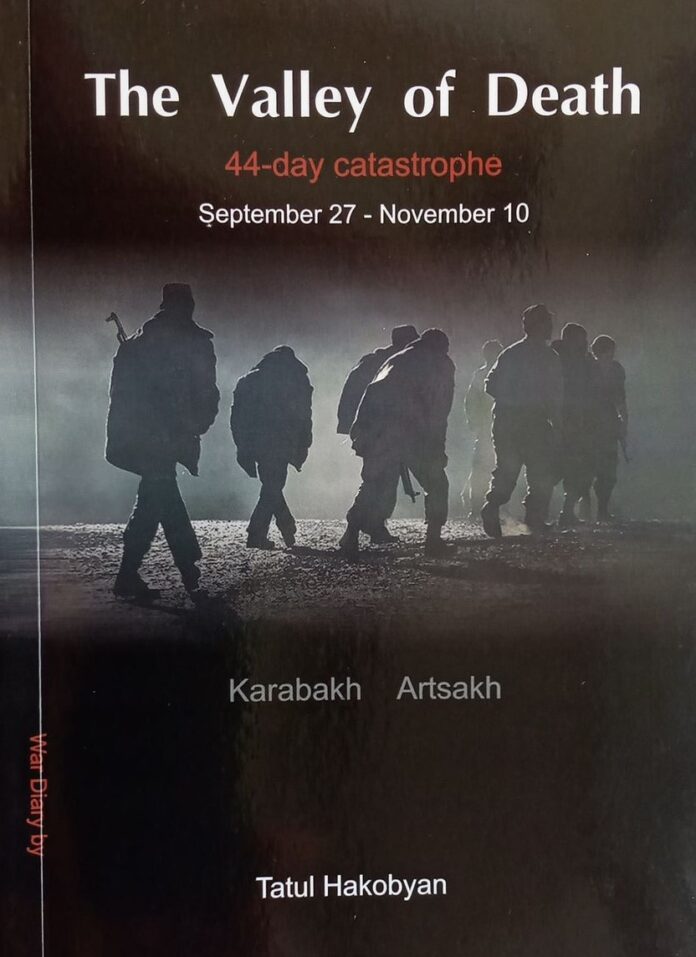Note – This article was published in The Valley of Death by Tatul Hakobyan. The article was first published in 2012.
During the last weeks and months, the situation on Armenian-Azerbaijani border, as well as the line of contact between Artsakh and Azerbaijan is extremely tense. Ceasefire violations take place on nearly hourly basis. The parties to the conflict open fire and kill young Armenians and Azerbaijanis every day. I would not exaggerate by saying that Armenian mothers who are sending their sons to serve in the military, realize that they are going to a war. During 2012, the defense forces of Armenia and Artsakh lost at least 10 soldiers from Azerbaijani sniper shootings and attacks.
Since the ceasefire of 1994, Armenian-Azerbaijani border and the line of contact in Karabakh did not change significantly. It may be viewed as indecent to make mathematic calculations, especially considering the fact that we are dealing with human lives, but it looks like at the time of status quo, when Armenia, Azerbaijan and Artsakh did not record any territorial gains or losses, thousands of lives were lost.
We are currently witnessing growing military rhetoric in Armenia, Artsakh and especially Azerbaijan. Politicians are talking about renewed military action more and more. It may be the case that Azerbaijan is less worried about its young people, considering the high birth rates which that country has. It may also be true that Ilham Aliyev and his regime in Azerbaijan benefit from this situation, when maintaining military escalation on the borders is needed for the in Azerbaijani domestic politics.
The existing status quo in Artsakh is logical to a degree. If you ever have a chance to walk along the line of contact in Karabakh, you will realize that in order to be able to defend Artsakh you need to maintain the existing positions. Similarly, if you go through Armenian-Azerbaijani border, in most cases you will notice that the Armenian positions are better situated. In other words, Armenians are high in the mountains, while Azerbaijanis are on flatland.
Considering the current situation, Armenia and Artsakh must be interested in maintaining the status quo for as long as possible. We have to realize that the new war, besides its potential catastrophic outcomes, with tens of thousands of lost lives, is against the interests of Armenia and Artsakh. Each war has a losing side and a winning side. Can we be 100% sure that in case of the new war the Armenians will win? If not, then we should put all efforts to prevent any possibility of possible military escalation in the near future. A new war between Armenians and Azerbaijanis may have three possible outcomes.
First. Azerbaijan unleashes a new war. However, it is not only able to make military gains, but is thrown back deeper in its territory. Armenians take advantage of the situation and continue by an offensive taking over more territories from Azerbaijan. An outcome may be a different layout of the contact line between Artsakh and Azerbaijan, when the new border is not just on the shore, but is divided by rivers. This is a possible outcome of the war, which many Armenians are dreaming about. While we may have many dreams, we also have to take into account the international environment, the Turkish world surrounding us, Armenia’s real abilities and the demographic situation of our country.
Second. Azerbaijan unleashes a full-scale war, breaks the line of contact and goes deeper into Armenian territories. The Armenian military is undoubtedly the most efficient in the region, but there is no such thing as an unbeatable army. There have been periods during the war of 1991-1994, when we appeared in hopeless and inextricable situations. In 1992, when Azerbaijanis had control over 40% of Karabakh, the fights were taking place near Gandzasar Monastery and the Armenian army was in panic.
So long as there is even 1% chance for us to lose at a war, Armenia should put all diplomatic and political efforts to prevent the possibility of a military solution. Whether it is the OSCE Minsk Group, our bilateral and multilateral diplomatic engagement must be directed at minimizing the chance for a military solution of Nagorno Karabakh conflict.
Third. Azerbaijan wages a war and both armies get involved in the confrontation by their full might, including artillery, air defense systems, long range missiles and more, however currently existing line of contact remains unchanged. We have to bear in mind that during the last couple of years Azerbaijan has acquired billions of dollars-worth modern weapons and military equipment.
Like it happened during the war of 1991-1994, the parties will be shelling civilian areas as well. Azerbaijan has weapon’s systems installed in Nakhijevan, which can potentially attack Armenia’s capital Yerevan directly. From Nakhijevani border to Yerevan it is only 50 kilometers.
Armenia and Artsakh have an approach of disproportionate respond to any aggression coming to Azerbaijan. This may very well be the only way of survival for the two Armenian states. Official Yerevan has repeatedly stated that any lost Armenian live will have heavy costs for Azerbaijan, however, even if we can imagine that a single Armenian soldier’s live will cost 10 Azerbaijanis, it cannot and will not comfort those Armenian mothers who send their sons to serve in the military and receive their dead bodies.
June 13, 2012












